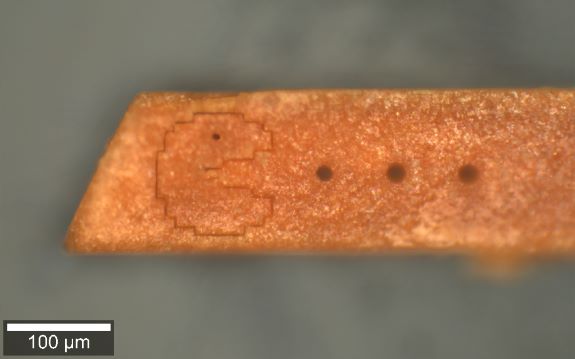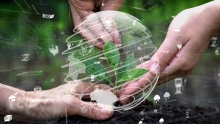Researchers have discovered that they can control the stickiness of adhesive bandages using ultrasound waves and bubbles. This breakthrough could lead to new advances in medical adhesives, especially in cases where adhesives are difficult to apply such as on wet skin.

Study challenges attitudes about young people and pandemic preventative measures, plus other stories


In disinformation campaigns, like the long-standing pro-Kremlin campaign targeted at Ukraine by the Russian government, who is most at risk of believing false information? A study led by McGill University and the Massachusetts Institute of Technology (MIT) found that Ukrainians who engaged in more analytic thinking were less likely to believe the pro-Kremlin disinformation, even if they were generally pro-Russia.

If you’ve ever seen a starling peck open a garbage bag or a grackle steal your dog pellets, you get a sense that some birds have learned to take advantage of new feeding opportunities – a clear sign of their intelligence. Scientists have long wondered why certain species of birds are more innovative than others, and whether these capacities stem from larger brains (which intuitively seems likely) or from a greater number of neurons in specific areas of the brain.

For the generations who grew up watching Finding Nemo, it might not come as a surprise that the North American West Coast has its own version of the underwater ocean highway – the California Current marine ecosystem (CCME). The CCME extends from the southernmost tip of California up through Washington. Seasonal upward currents of cold, nutrient-rich water are the backbone to a larger food web of krill, squid, fish, seabirds and marine mammals. However, climate change and subsequent changes in ocean pH, temperature and oxygen levels are altering the CCME — and not in a good way.

Many mammal species living in cold climates tend to have large bodies and short limbs to reduce heat loss – a general pattern known as Bergmann’s rule. However, bats are the exception to the rule, displaying small body sizes in both hot and cold regions. A McGill-led team of researchers is shedding light on this long-standing debate over bats’ body sizes and focus on why bats are seemingly non-conforming to ecogeographical patterns found in other mammals. Their findings offer a new method for investigating complex macroecology across bat species.

Imagine having to choose over and over between what you enjoy doing and the pain that it might cause you, whether physical or emotional. If you live with conditions such as depression, anxiety, or chronic pain, you are probably familiar with making these difficult choices on a daily or weekly basis. But surprisingly little is known about which areas of the brain are involved in decisions of this kind.

Astronomers at McGill University, MIT and elsewhere have detected a strange and persistent radio signal from a far-off galaxy, that appears to be flashing with surprising regularity. Classified as a fast radio burst, or FRB, this new signal persists for up to three seconds, about 1,000 times longer than the average FRB. Within this window, the team detected bursts of radio waves that repeat every 0.2 seconds in a clear periodic pattern.

Pac-Man carving by laser cutting. Credit: H. Borchers et al.
A gentler, more precise laser cutting technique
Laser cutting techniques are usually powered by high energy beams, so hot that they melt most materials. Now scientists from McGill University have developed a gentler, more precise technique using low-power visible light.

As the world fights climate change, will the increasingly widespread use of artificial intelligence (AI) be a help or a hindrance? In a paper published this week in Nature Climate Change, a team of experts in AI, climate change, and public policy present a framework for understanding the complex and multifaceted relationship of AI with greenhouse gas emissions, and suggest ways to better align AI with climate change goals.

Asked to list the most earthquake prone countries, few people would earmark Canada. Yet, in 2021, Natural Resources Canada identified 46 earthquakes, which registered between 1.8 and 5.3 magnitude and to date, 26 earthquakes have occurred in 2022. Damaging earthquakes are surprisingly common in the Western Quebec Seismic Zone, which encloses the Ottawa Valley from Montreal to Témiscamingue as well as the Laurentians. The question is not if but when a major quake will hit one of Canada’s major urban centres, an event that poses risks to human life and infrastructure.

The extremely salty, very cold, and almost oxygen-free environment under the permafrost of Lost Hammer Spring in Canada’s High Arctic is the one that most closely resembles certain areas on Mars. So, if you want to learn more about the kinds of life forms that could once have existed – or may still exist – on Mars, this is a good place to look. After much searching under extremely difficult conditions, McGill University researchers have found microbes that have never been identified before.

Rates of melanoma, a deadly form of skin cancer, are on the rise in Canada. Those living in southern and coastal areas are most at risk, according to a new study led by McGill University.
“Cutaneous melanoma causes more deaths than any other skin cancer, accounting for 1.9 per cent of all cancer deaths in men and 1.2 per cent in women in Canada. Globally, there were 290,000 new cases of this form of skin cancer in 2018,” says Dr. Ivan Litvinov, an Assistant Professor in the Department of Medicine at McGill University.

Each mistletoe berry can produce up to two metres of a gluey thread called viscin. It allows the seeds of this parasitic plant to stick to and infect host plants. Since ancient times, mistletoe berries have been explored as treatments for everything from infertility and epilepsy to cancer. But, until now, no one has fully investigated the potential medical or technical uses of the glue itself.
Lack of environmental awareness and preference for variety leading causes of waste in fast-fashion production

